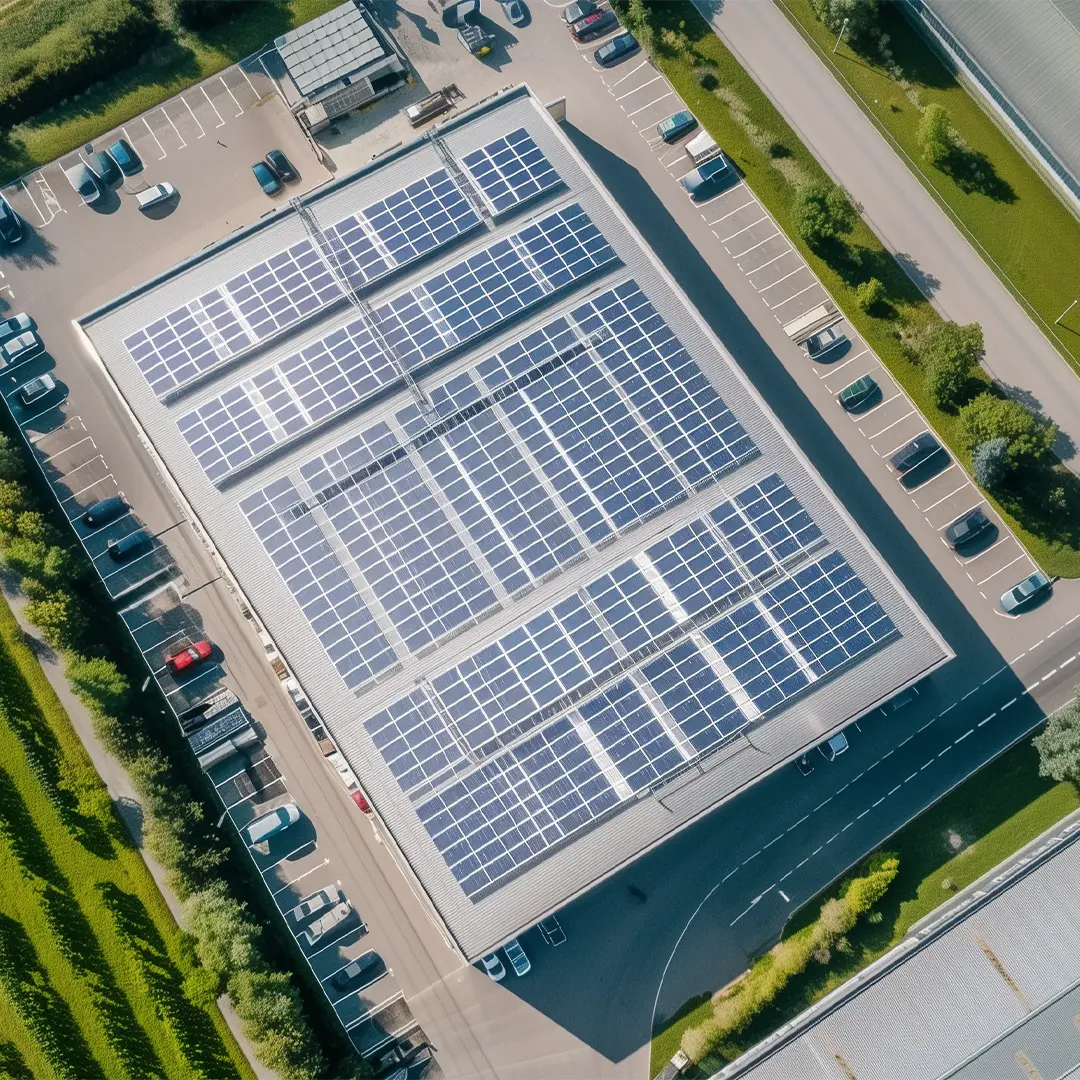- Insights & events
- 4flow studies

4flow study
Practical measures for sustainable warehouse efficiency
Few topics have gained public attention in recent years faster than climate change and the need to reduce greenhouse gas (GHG) emissions. In the context of sustainable supply chains, the focus is often on transportation, yet logistics facilities, despite their central role, have not had the same extensive consideration.
This study investigates ten key sustainability levers in warehouse design, infrastructure, equipment and operations. It focuses on the impact of each lever on GHG emissions and operational expenditures (OpEx).
Ten levers to improve sustainability in typical warehouses
Click on a letter to learn more:
Four of the ten measures focus on core logistics processes: storage technology, material flow optimization, material handling and paperless inbound and outbound. Another six measures relate to the building infrastructure and operations, as well as electricity generation: solar panels, insulation, heating systems, dynamic lighting control, air exchange management and electricity sourcing.
The measures are evaluated using a defined reference warehouse, which is a manually operated brownfield distribution center with an area of 50,000 m². Emissions and costs are cumulated over a horizon of 15 years, allowing comparison and prioritization of the measures.
The GHG emissions savings over 15 years reach up to 5,000 tons, representing savings of up to 47% of total warehouse CO₂ emissions over that period. The impact on OpEx in the same time period ranges from an additional running cost of almost €8 million to savings of more than €12.5 million.
Accordingly, based on the reference warehouse, companies should carefully schedule implementation of measures within a sustainable warehousing roadmap considering the following three groups (see chart below):
-
Prioritize
These measures should be implemented first. For the most part, they significantly reduce GHG emissions and generate OpEx savings at the same time. Example measures are storage automation and use of solar panels.
-
Consider
These measures have a moderate positive impact, generally in terms of both GHG emission reductions and OpEx. As the implementation effort of these measures is manageable, it is still worth pursuing them. An example is the implementation of paperless inbound and outbound processes.
-
Monitor
These measures – namely insulation and heating systems – have a positive impact on GHG emissions but require significant investment or increase OpEx. These measures could become relevant in a greenfield project.
The study illustrates that to profoundly reduce a warehouse’s carbon footprint, major changes to the warehouse setup are necessary. Applying various measures in combination yields the most improvement. Many of the sustainability measures related to physical assets such as buildings, equipment and power generation systems require high investments. Owners and operators of warehouses should consider how technology, electricity prices, and sustainability regulations are expected to develop over the coming years when planning a new warehouse.
By strategically combining different levers, like automated storage technology, renewable energy and solar panels, businesses can significantly reduce GHG emissions while still achieving considerable cost savings.
Furthermore, optimizing logistics processes and material flows in warehouses is an important step, as the resulting reductions in OpEx establish an economic foundation for investments in sustainability.
4flow recommends applying the findings of this study in ongoing and future warehouse planning and optimization projects to enhance logistics performance and reduce GHG emissions for the long-term. This recommendation applies equally to brown- and greenfield projects, with an emphasis on infrastructural and building-related measures for the latter. Strategically investing in sustainable warehouse concepts today will help reach sustainability targets and yield cost advantages in the future.
Authored by:


Jan-Niklas Grafe
Principal
at 4flow


Jan Oppermann
Head of Sustainability Practice
at 4flow


Wendelin Gross
Head of
4flow research


Tom Binsfeld
Supply Chain Scientist
at 4flow research


Iwan Nikitin
Manager
at 4flow




